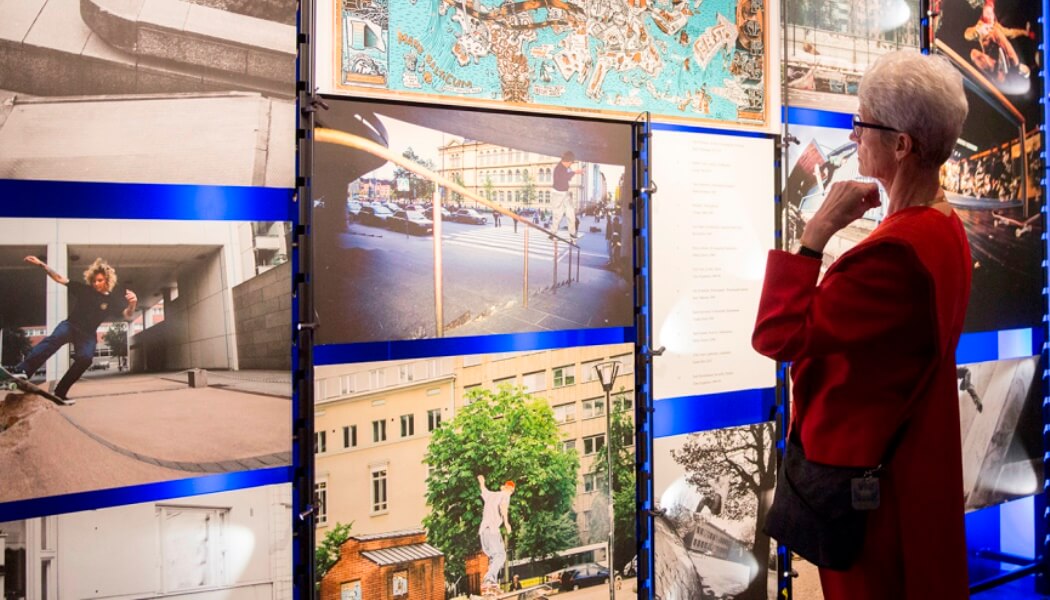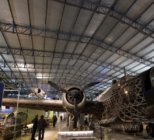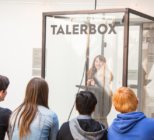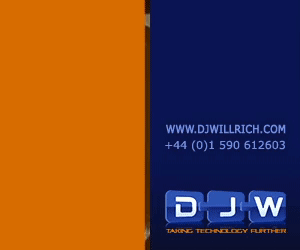The Helsinki City Museum has seen the thorough €11m renovation and fit-out of five historic buildings, which have been transformed, with a modern extension built between them, into a unique museum complex. Its design was based on a new philosophy of what a museum should be with the visitor at the heart of its planning and ‘inviting’ interior and exhibitions that tap into people’s memories. For this reason the museum picked up the International Award at the Museums + Heritage Awards for Excellence 2017 in May. The five historic buildings are located in Tori Quarters of the city and consist of the Helsinki City Museum, Children’s Museum, Tram Museum Hakasalmi Museum and Worker Housing Museum.
We gave citizens opportunities to voice their opinion in the exhibition planning and not to rely too much on the academic or expert view
When the museum team started to plan the new city museum in spring 2013 they created a project group consisting of six museum staff, which included curator Jari Harju. The group had the responsibility for the overall concept of the museum and Harju’s role was also to produce the new permanent exhibition Helsinki Bites.
“This project group was the most important tool or forum because we had the opportunity to think about the concept and the realisation of the museum. It was also the first time in my career I had the chance to do this,” says Harju.
The discussions began with the working group asking: “What are the visitors expecting from us?” And Harju says starting with the visitors’ needs and desires was also something new for him. From that basis they began to construct a manuscript for the museum and spent a lot of time learning about the expectations and wishes and even fears of their visitors. “I think that is a big part of the success we are now experiencing.”
The move from its old premises has been the biggest transformation to Helsinki City Museum since its founding in 1911 and visitor figures for the museums have not only improved they have more than doubled from 2008-2015, where they fluctuated between 130,000 and 200,000, to 401,181 from May to December 2016, with Helsinki City Museum taking the lion’s share with 315,334 visitors. The figues are notable as Helsinki’s population is 616,000.
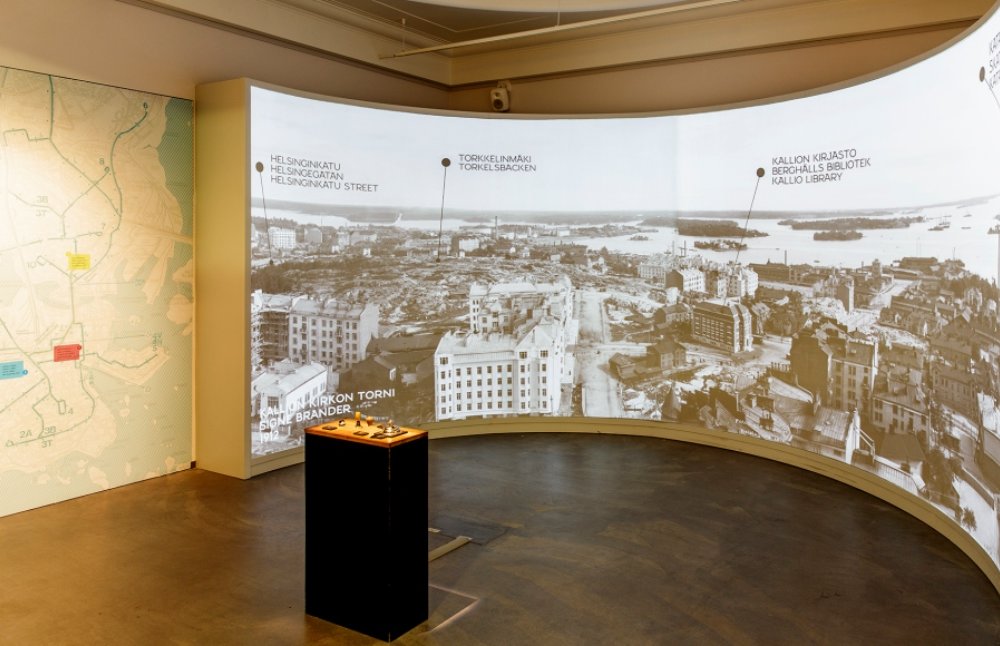
The relocation provided an opportunity for a re-evaluation of the institution and a key aim was set to include visitors in the planning process and so cultivate a stronger feeling of ownership of the museum among residents. As a free entry museum, Helsinki City Museum is a public space open to all and this was an opportunity for the new museum to be a more communal place than the previous home and one where the visitor could not only visit exhibitions but also socialise, relax and be inspired.
“We had a dialogue with the public before opening the new museum and it gave people different kinds of opportunities. When we started to plan the Helsinki Bites exhibition we still had the old one open and we invited 20 people to critique this exhibition and gave them sticky notes and told them that if they didn’t like something to write a short comment and stick a note next it.”
Who cares?
The invited guests had one hour to appraise the exhibition and then afterwards the working group toured the exhibition with them and discussed why there were so many negative comments in certain parts and why somebody wrote “who cares?” by a historical caption and what did they meant by that.
“This face-to-face discussion and dialogue with the visitors was really interesting. This was important and some of the insights we got from this event were things we knew about in our working group but it strengthened our ideas. For example, we knew that people wanted stories in the exhibition and not just facts and dates and mentions of historically important people. They wanted stories of ordinary people. This was also our hunch, and we then knew we had to follow it.”
One idea that was born from the working group was not to make a traditional chronological narrative for the exhibition because, not least, the museum did not have many objects from the first 200 years of the city from its founding as a trading town by King Gustav I of Sweden in 1550. “We thought we would like to focus on the topics that the citizens of Helsinki found interesting such as how people lived, how the city has changed and unemployment over the ages. We found a great story from our collection in a diary from 1890 of an employed carpenter: it was then a case of how you can present the diary.”

The museum partnered with a cartoonist who took the diary and illustrated the story on one of the exhibition walls, so now there is this moving story of the carpenter and his trials and tribulations as an out-of-work tradesman in 1890s Helsinki. The project group felt that the display took nothing away from the diary’s meaning and in fact made it easier to read and follow with the illustrations. “When you read these stories it’s surprising to think it is from the late 19th century, as I’m pretty sure that unemployed people nowadays will have similar feelings. It is quite moving and although we don’t know who this person is, it is such an interesting story of the city.”
As part of the museum’s commitment to encompass Helsinki citizens’ opinions more than 1,000 members of the museum’s visitor panel received a short survey by email every couple of months during the design process. The museum also created user profiles based on customer research and focus group interviews. These profiles offered a deeper understanding of people’s different needs and allowed the project group to keep those needs in mind throughout the design process. Designing the new museum became not only about furnishing spaces or planning exciting exhibitions, but first and foremost about designing a great visitor experience.
Sharing experiences
“We gave citizens opportunities to voice their opinion in the exhibition planning and not to rely too much on the academic or expert view,” says Harju. “People were sharing experiences and that’s what we want to accomplish in different ways. It is still educational in a way. What we accomplished was to make a different city museum: when you travel around the world and visit other city museums it is amazing how they all look alike. We thought let’s try something else. We had a dialogue with the visitors to see what they were expecting and now we have a unique city museum for Helsinki.”
There are nine sections to the Helsinki Bites exhibition and the last one is called Our City, which was designed and populated by a group of Helsinki skateboarders. The skateboarders had contacted the museum while it was designing the exhibition to ask if they could use old photos from its collection for a video. Harju said he came across this conversation and thought it would be interesting to have them involved in this final section of the exhibition to show how the city and its history looks from the eye of the skateboarders. “They selected photos, objects and wrote the text and now it’s a unique and thought-provoking display. This part of the exhibition is going to change over time and in the future we will select another group from the community. The idea is it should give a completely different view of the city. It’s not easy for us as museum professionals and historians to give space over like this but it’s worth it.”
One of the most important decision the project group had to make was picking a designer and while this took some time according to Harju they were on board almost as soon as plans for the new museum got underway.

Helsinki designer Taina Väisänen of architect firm ark SAFA, N.e.o Ark Oy, was chosen for the job and says that all her work on the exhibition was based on the project group’s manuscript, which in turn was based on the interviews with the visitors.
“My job was to visualise the manuscript,” she says. “Space, atmosphere and the manuscript. These elements must fit together. Also you have to know to whom you are telling the “story”. Visitors must be able to see, feel, and understand the exhibition without textual information. In other words, they have to easily understand where they should go next. A designer leads the visitors with elements, lights, sounds, media etc.”
Väisänen says they wanted to create an experience in which the visitor feels like they are walking in the city, sometimes outside in the street or on the shore and sometimes inside somebody’s home or bar (a 1950s home, pictured above, was built for the exhibition, with furniture and magazines of the time and popular shows of that era playing on the radio). So the designers created a path that leads visitors through the city of Helsinki.
“We used different colour temperatures to create a feeling of exterior and interior and because we wanted to avoid traditional showcases, most of them were built inside the exhibition elements.”
Harju says the museum is extremely pleased with how the visitor numbers have grown and how Helsinkians can now find something that is familiar and fascinates them in the exhibition. He says this has started many discussions and has now become a key factor in how people get interested in the past. However, the Helsinki Bites exhibition has not gone without criticism or doubt especially from some of its foreign visitors who want to know why the displays are not chronological and why there are no in depth WWII stories, for example. But this is a city museum and the citizens have spoken.
In Focus
This case study is part of an In Focus Feature on Exhibition Design

